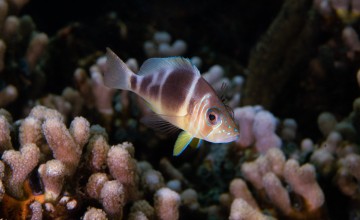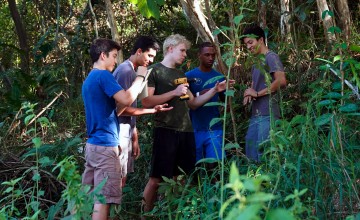
Projects and Stories
Research Focus
My lab uses natural history observations, combined with experimental field and laboratory studies, to better understand the evolution of animal behavior in changing environments. Our research focuses primarily on weakly social bees and fungus-growing ants to understand how environmental, developmental, neurobiological and genetic factors shape the expression or loss of social behavior and drive the evolution of more — or less — complex societies.
Additional links
Contact
Research Overview
What are the causes and consequences of behavioral evolution in changing environments?
My colleagues and I use natural history observations combined with experimental field and laboratory studies to better understand the evolution of animal behavior in changing environments. We focus primarily on weakly social sweat bees (Halictidae) and fungus-growing ants (Attini) to understand how environmental, developmental, and genetic factors shape the expression or loss of social behavior, and drive the evolution of more (or less) complex societies. Much of this work involves nocturnal bees, which we use to understand how and why animals invade a new, extreme, ecological niche, and what are the behavioral and neurobiological consequences of doing so?
How and why do brains of insects and other invertebrates evolve to larger or smaller sizes, relative to body size, and what is the significance of these scaling patterns on brain size?
Education
1991 Ph.D. (Entomology) with Honors, University of Kansas
1982 B.S. (Biology), University of Michigan
Selected Publications
Karen M. Kapheim KM, Jones BM, Pan H, Li C, Harpur BA, Kent CF, Zayed A, Ioannidis P, Waterhouse RM, Kingwell CJ, Stolle E, Avalos A, Zhang Z, McMillan WO, Wcislo WT. 2020 Developmental plasticity shapes social traits and selection in a facultatively eusocial bee. Proceedings of the National Academy of Sciences USA
Smith AR, Kapheim KM, Kingwell CJ &Wcislo WT. 2019. A split sex ratio in solitary and social nests of a facultatively social bee. Biology Letters 15: 20180740. http://dx.doi.org/10.1098/rsbl.2018.0740
Stone T, Webb B, Adden A, Weddig NB, Honkanen A, Templin R, Wcislo W, Scimeca L, Warrant E, Heinze S. 2017. An anatomically constrained model for path integration in the bee brain. Current Biology 27:3065-3089
Tierney SM, Friedrich M, Humphreys WF, Jones TM, Warrant EJ Wcislo WT. 2017. Consequences of evolutionary transitions in changing photic environments. Austral Entomology doi:10.1111/aen.12264
Wcislo WT and Fewell JH. 2017. Sociality in bees. In Rubenstein DR and Abbot P (eds), pp. 50-83. Comparative Social Evolution. Cambridge University Press.
Nygaard S, Hu H, Li C, Schiøtt M, Chen Z, Yang Z, Xie Q, Ma C, Deng Y, Dikow RB, Rabeling C, Nash DR, Wcislo WT, Brady SG, Schultz TR ZhangG, Boomsma JJ. 2016. Reciprocal genomic evolution in the ant-fungus agricultural symbiosis.Nature Communications 7:12233 DOI: 10.1038/ncomms12233


